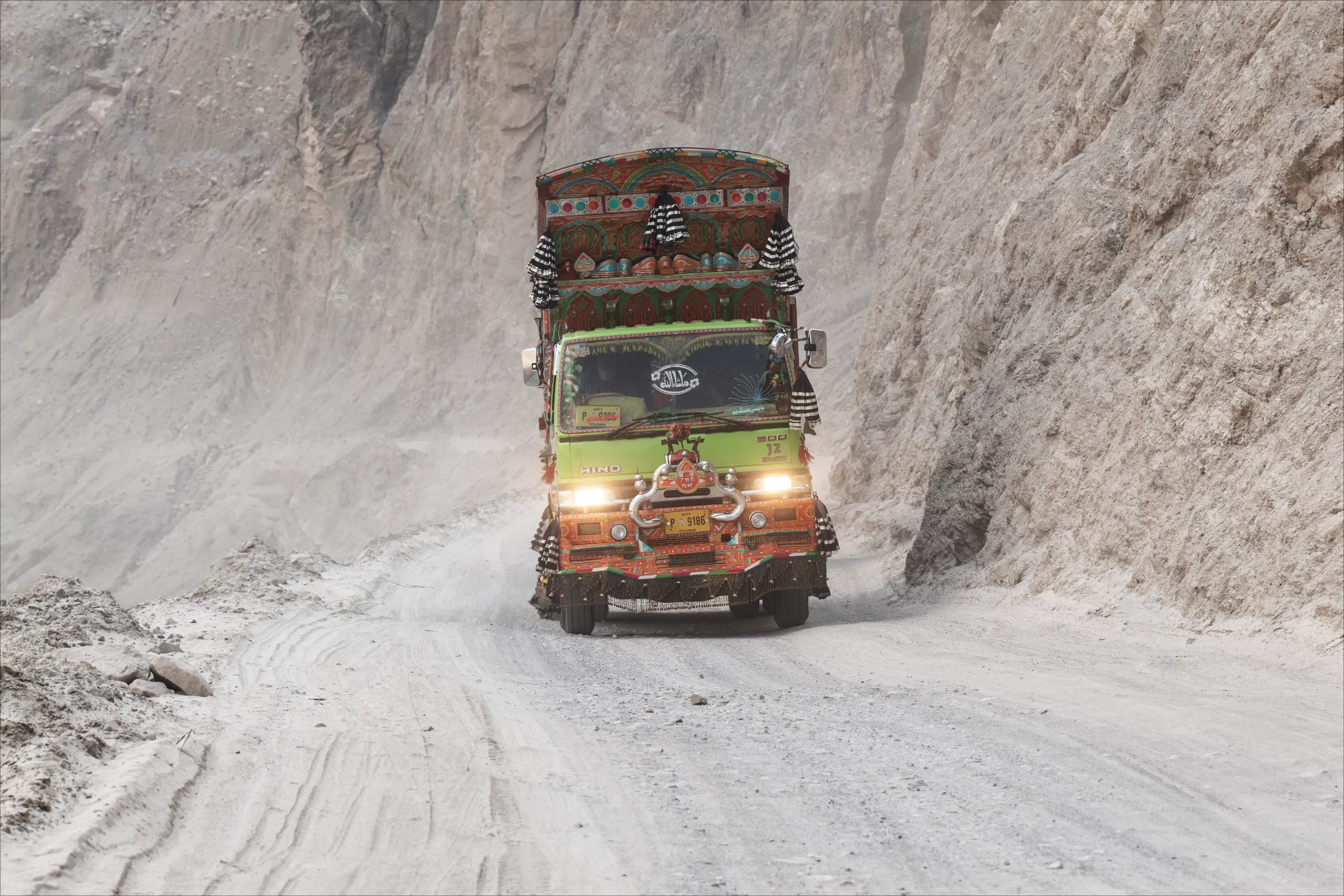
The Karakoram Highway to the Hunza Valley
For almost as long as I can remember I have had a fascination with the Hunza Valley and the Karakoram Highway but the UK Government travel advise has generally not recommended travel to this region or some areas of this wonderfully dramatic and colourful destination. This year I bit the bullet and travelled to Islamabad from where I could connect with KKH and journey north to the Hunza Valley.
Some research into travelling to the Hunza valley led me to Hunza Valley Explorers, a specialist local travel company based in Upper Hunza who managed the trip in its entirety. Travel to Hunza requires a robust four wheel drive vehicle and for this trip a Toyota Landcruiser is provided along with driver Saeed an ex army officer and knowledgable guide Amin. Travel varies from good metalled roads to precarious narrow tracks often blasted into the mountainside often with 2/300 metre drops to the river valley below.

Travelling in mid October when the colours and hues of the poplar, apricot and almond trees along with the azure blue glacial waters offer photographic opportunities in abundance. The Leica SL2 with 24 – 90mm and 90 – 280mm lenses ideally coped with all eventualities including the ever changing light and rugged terrain. Being a mountainous area the weather is variable and ranges between zero and 20 plus degrees along with sun, rain, wind and snow, all key components of landscape photography.
Each day we travel from 7.30 a.m until 4.00 – 5.00 p.m making the most of the morning and evening light passing through many villages where we meet herds of cattle or goats being driven to lower pasture before the onset of winter. Tractors and trailers were delivering the last of the produce to the towns and villages of the valleys as well as providing transport for the workers maintaining the narrow roads. Frequent stop sare made for cups of milk tea or Doodh Patti Chai and lunches of Yak or Chicken Korai accompanied by rice and chapatis.
Most days travel is arduous but wonderfully rewarding none more so than our 59 kilometre drive along the Shimshal Valley to the group of villages comprising Shimshal. Precipitous roads following the river valley and criss crossing the river over many British built steel cable and slatted wood suspension bridges. A journey of four and a half hours brings us to Shimshal in time for celebrations honouring the Aga Kahn, the spiritual leader of the Ismaili Muslims. In a field on the outskirts of the village a Yak is wrestled to the ground and slaughtered while in an adjacent field the village men dance to the delight of the attendant villagers.


Ismaili muslims are a culturally diverse community following Shi’a values and a commitment to bettering self and society through a pluralistic approach to peace and understanding and living in 25 countries throughout the work.
Each day is a sheer delight as we journey through some of the most magnificent scenery on earth passing small towns and villages populated by wonderfully welcoming people whose hardiness does them immense credit. In the villages we visit schools were we are greeted by children singing for us and with such pleasure and passion, a very humbling experience. In the valleys we see glaciers, jagged snow capped peaks, glacial waters ranging from azure blue to green, forests of poplar, almond and apricot trees along with farms or small holdings.


On the day that we travel to to the Kunjerab Pass, the weather changes and we have some snow but that is not enough to deter Saeed who relishes the journey, “I’m a mountain driver not a city driver,” he exclaims. We are the only vehicle on the road for much of the journey, not surprising as the pass is closed for the winter. The poplar trees are now coated with snow muting the vibrant colours to a more pastel shade and as we approach the summit we pass ibex and and yak but no snow leopards, although they are not uncommon here.
We finally arrive at the border with its border post and ATM. Yes an ATM, the highest in the world at 4693 metres!

One evening we are invited to a wedding in the small village of Upper Ghulkin where we enjoy a meal of Yak following watching the wedding ceremony. The bride and groom arriving on the back of brightly painted pick up truck with two elegant high back chairs each side of table with a colourful oil cloth bedecked with two vases of flowers (plastic). The village leaders offer a warm welcome and are both engaging and extremely well informed. A wedding ceremony earlier in the year saw the bride and groom arrive on a bulldozer. They certainly do things differently in Ghulkin.
Finally after days of exploring the colourful and dramatic valleys of the Hunza region we make an early start to once more join the Karakoram Highway for our 10 hour drive to Besham. The KKH or the N35 is a 1300km road that extends from the Punjab to the Kunjerab Pass and the Chinese border where it becomes the China National Highway 314. Our journey is punctuated by many road signs advising of the dangers of the highway; “Road is Hilly, Don’t be Silly”, “This is a Highway not a Runway”, and on the entrance to a tunnel “Encroachment Causes Fatalities”.
